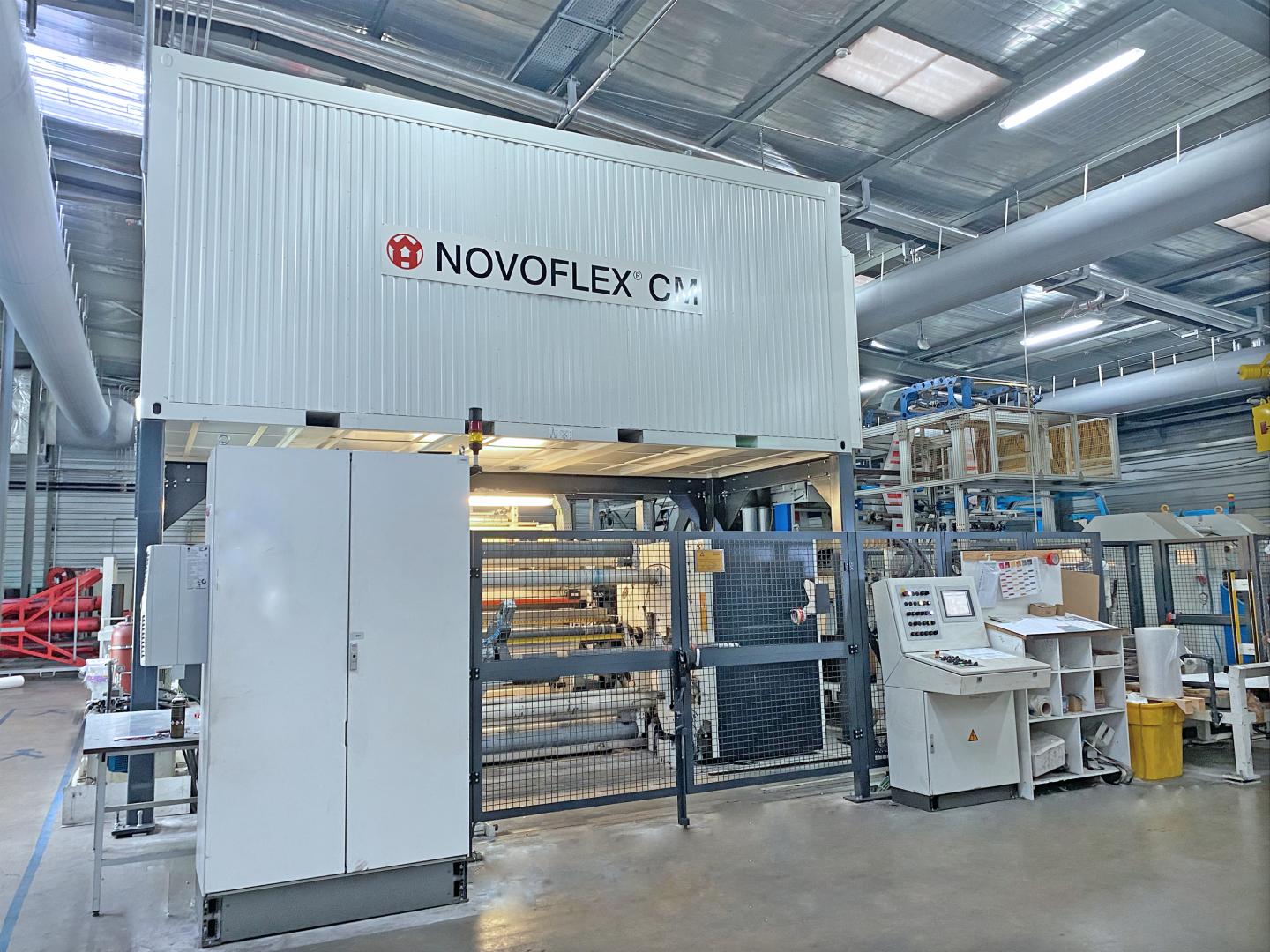Bulk Container Recycling Initiatives: Sustainably Browsing Sector
Wiki Article
Effective Industrial Recycling Solutions for Lasting Product Packaging: A Comprehensive Guide
That's where this thorough overview on effective commercial recycling remedies for lasting product packaging comes in. By exploring crucial areas such as packaging material selection, designing for recyclability, executing reusing framework, collaborating with recycling partners, and monitoring and determining reusing success, this guide will certainly furnish you with the expertise and devices necessary to make enlightened choices and drive favorable change within your company. Whether you're a packaging specialist, sustainability manager, or simply interested in the subject, this overview will supply useful insights and techniques to assist you navigate the world of sustainable packaging.Product Packaging Product Selection
The option of packaging materials plays a critical function in ensuring the sustainability of commercial reusing services. The selection of materials is crucial in reducing ecological effect and making the most of reusing performance when it comes to sustainable product packaging. Picking the best materials can help decrease waste generation, conserve sources, and advertise a round economic situation.One vital aspect to take into consideration in product packaging material selection is recyclability - processing company. Materials that can be conveniently reused and integrated back into the manufacturing cycle are favored. For instance, materials like cardboard, paper, glass, and particular kinds of plastics can be recycled numerous times without losing their quality. On the other hand, materials that are tough to recycle, such as combined plastics or non-recyclable composites, can develop obstacles for the reusing procedure and may finish up in garbage dumps or incinerators.
One more factor to consider is using renewable and naturally degradable products. Packaging made from renewable energies, such as plant-based plastics or biopolymers, can help decrease dependence on fossil gas and minimize environment modification. In addition, biodegradable products damage down naturally with time, decreasing the build-up of waste in land fills.
Furthermore, the weight and volume of packaging materials must be decreased to decrease transportation prices and power usage. Light-weight materials not only call for fewer sources during production however additionally add to reduce carbon exhausts throughout transportation.
Creating for Recyclability
In order to ensure the recyclability of packaging materials, thoughtful layout is necessary. Designing for recyclability involves creating product packaging that can be conveniently sorted, divided, and processed in recycling centers. One vital element of designing for recyclability is the selection of materials. Product packaging designers must focus on using materials that are commonly approved for reusing and have actually developed recycling facilities. Products such as glass, aluminum, and particular types of plastic, like PET and HDPE, are frequently reused and ought to be chosen over materials that are hard or pricey to reuse.Another critical consideration in designing for recyclability is the removal of unnecessary parts or materials. By lessening the number of layers, layers, and added components, product packaging can be made easier and simpler to recycle. Furthermore, designers should aim to minimize using combined products, as they can complicate the recycling procedure.

Implementing Recycling Infrastructure
Effective implementation of reusing framework is important for the success of industrial recycling solutions. Without appropriate framework in position, the recycling process ends up being ineffective and ineffective, hindering the general goal of lasting product packaging.To carry out recycling facilities effectively, a number of key elements require to be thought about. There ought to be an efficient collection system that assists in the splitting up and collection of recyclable materials. This can include designated recycling containers in public areas, in addition to collaborations with waste administration business for curbside pickup and sorting.
As soon as collected, the recyclable materials need to be carried to reusing facilities in a timely way. This requires efficient logistics and transportation networks, guaranteeing that the materials get to the proper facilities without delay.
At the reusing centers, advanced sorting and processing innovations must be in area to divide various kinds of materials properly. This consists of the usage of automated sorting equipments, optical scanners, and hands-on sorting techniques.
Furthermore, there should be a robust market need for recycled materials. This can be attained with cooperations with makers and markets that utilize recycled materials in their manufacturing procedures. Producing a secure market for recycled materials incentivizes the recycling sector and promotes the round economic climate.
Teaming Up With Recycling Partners

One trick aspect of teaming up with reusing partners is the facility of clear interaction networks. It is essential to develop open lines of interaction to assist in the exchange of information, updates, and feedback. This permits both parties to remain informed concerning the progression of recycling campaigns and deal with any kind of obstacles or problems that might emerge.
In addition, partnership can involve joint efforts in designing and executing reusing programs. Recycling companions can supply beneficial understandings and support in developing efficient collection systems and identifying one of the most suitable recycling innovations. By functioning together, organizations and recycling partners can maximize the recycling process and lessen waste.
Additionally, cooperation can expand past the operational facets of reusing. It can additionally include campaigning for and education and learning efforts. By signing up with forces, businesses and reusing companions can raise recognition regarding the importance of recycling and promote the fostering of sustainable product packaging methods among customers and other stakeholders.
Monitoring and Measuring Recycling Success
To guarantee the performance of industrial reusing services and the success of sustainable packaging objectives, it is vital for businesses and their reusing companions to establish a detailed system for tracking and gauging recycling success (processing company). Tracking and measuring recycling success enables services to examine the impact of their reusing efforts, determine locations for improvement, and set significant targets for future progressOne means to track recycling success is with making use of information collection and evaluation tools. By gathering information on the quantity of product packaging waste created, the percent of waste that is reused, and the kinds of materials being reused, organizations can acquire useful insights right into their recycling efficiency. This information can then be examined to identify fads, patterns, and locations of inefficiency.
Another crucial facet of tracking and measuring reusing success is establishing clear and standardized metrics. This allows businesses to contrast their efficiency versus sector standards and track their progress gradually. Metrics such as reusing prices, waste diversion rates, and greenhouse gas discharges can supply a quantitative measure of a company's reusing success.

Final Thought
To conclude, carrying out effective industrial recycling services for sustainable product packaging requires mindful factor to consider of packaging material choice, developing for recyclability, applying recycling infrastructure, More about the author collaborating with reusing companions, and tracking and gauging recycling success. By integrating these practices, companies can add to an extra environmentally-friendly and lasting strategy to product packaging, minimizing waste and promoting the circular economic climate.By exploring essential areas such as packaging product choice, developing for recyclability, visite site implementing reusing framework, teaming up with recycling companions, and monitoring and determining recycling success, this overview will certainly equip you with the knowledge and devices essential to make educated decisions and drive positive adjustment within your company. Packaging designers need to prioritize the use of materials that are commonly accepted for reusing and have actually developed reusing frameworks.Partnership with reusing partners is necessary for the successful execution of commercial reusing services and the achievement of lasting packaging objectives. By joining pressures, companies and reusing companions can elevate understanding concerning the importance of reusing and promote the adoption of lasting packaging techniques amongst consumers and other stakeholders.
By collecting information on the amount of product packaging waste produced, the portion of waste that is recycled, and the types of materials being recycled, companies can get useful insights right into their recycling efficiency.
Report this wiki page